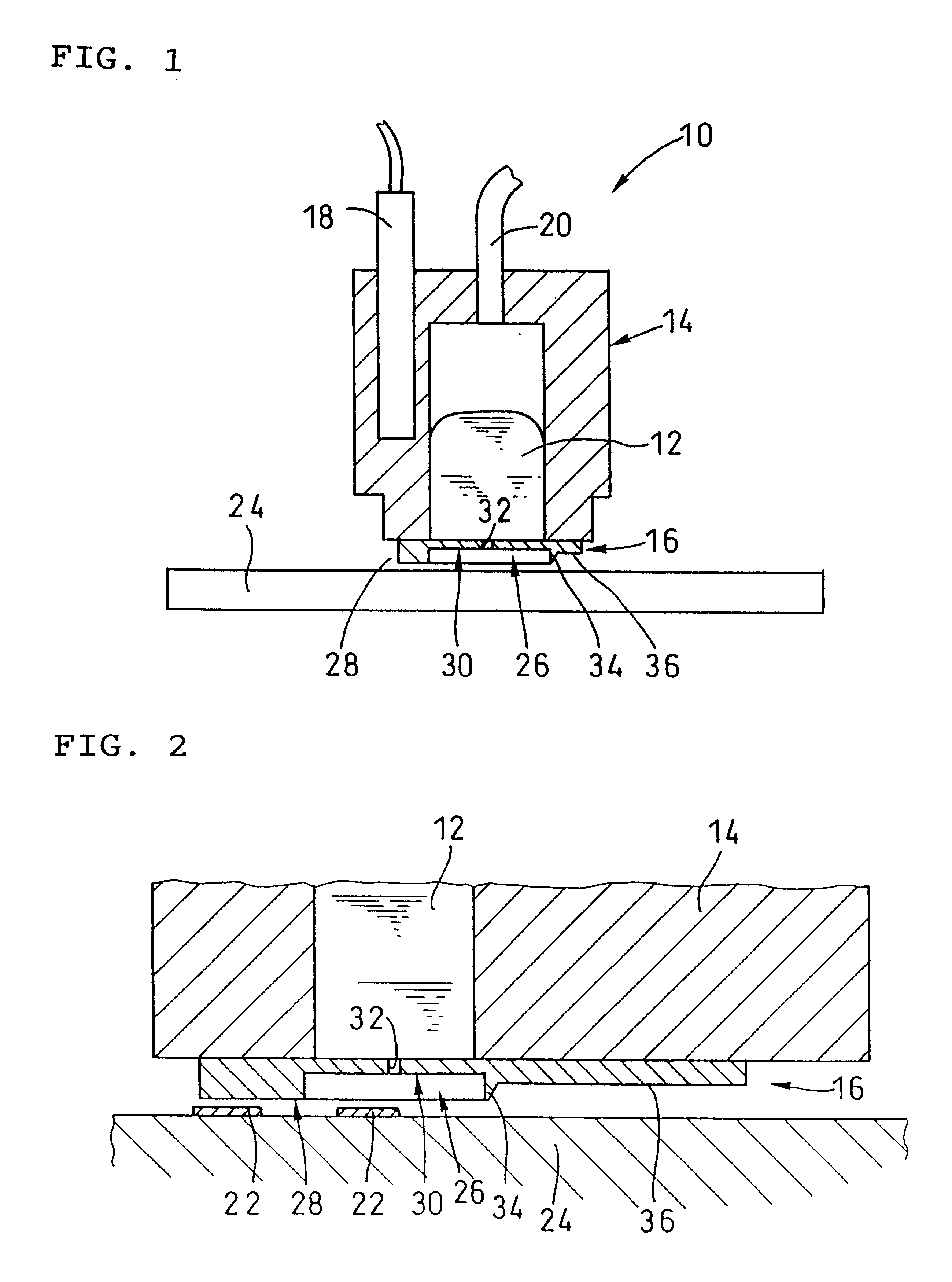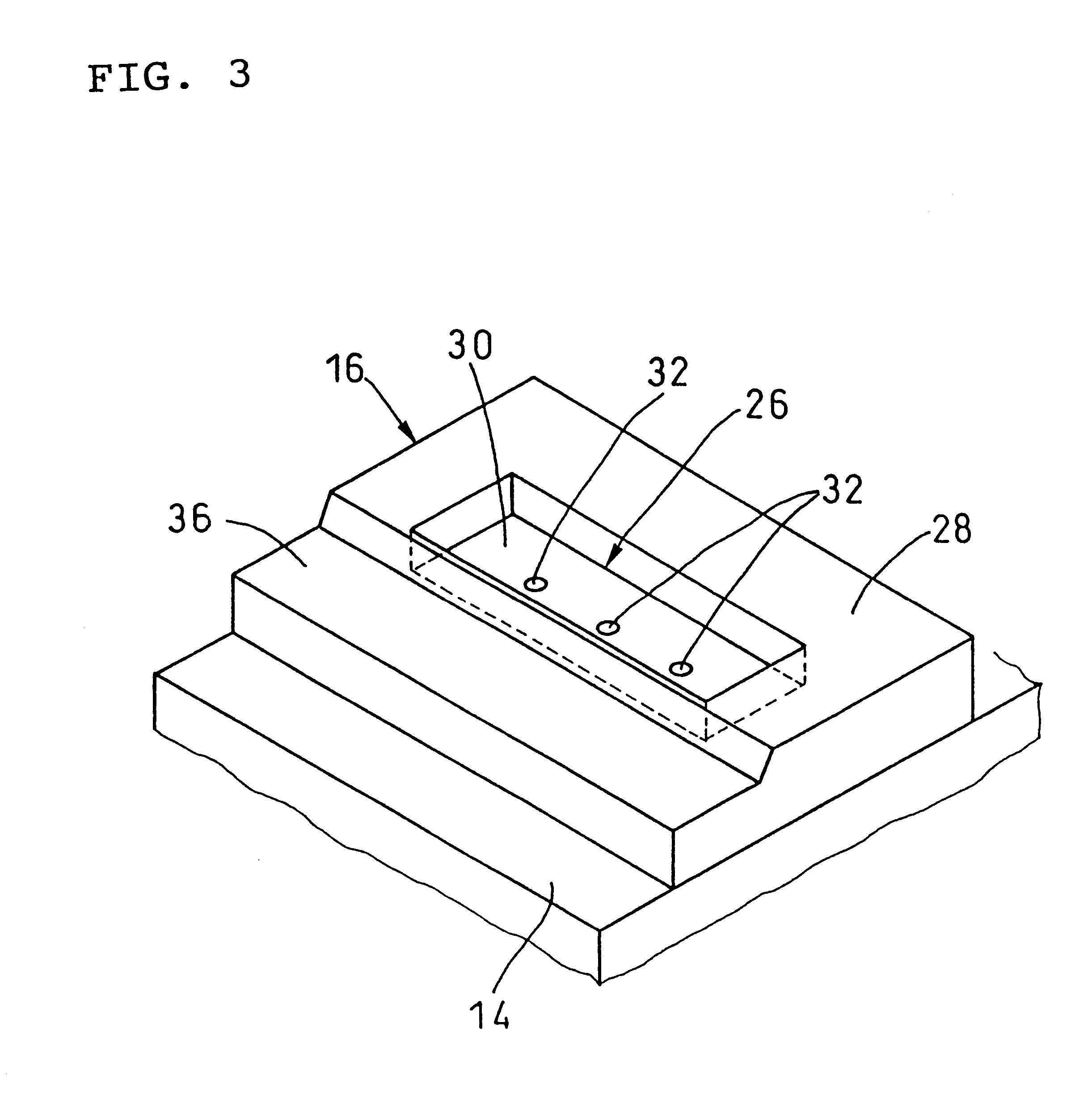Solder bump forming method and apparatus
a technology of forming method and forming method, which is applied in the direction of welding/cutting media/materials, manufacturing tools, and solventing apparatus, etc., can solve the problems of prolonged adjustment operation, increased production cost, and inability to use methods that have not been widely used, so as to eliminate the limitation on the type of target substrate and easy separation
- Summary
- Abstract
- Description
- Claims
- Application Information
AI Technical Summary
Benefits of technology
Problems solved by technology
Method used
Image
Examples
Embodiment Construction
eutectic solder was used, and a substrate was spaced 25 .mu.m from the flange portion and 55 .mu.m from the height regulator. The pressure of the gas was 150 gf / cm.sup.2. With this arrangement, bumps each having a height of 65 .mu.m were formed on 140-.mu.m diameter pads. The processing time was only about 5 to 10 seconds for each flip-chip pattern. This was possible because the formation of barrel-shaped solder melt fractions and the separation thereof from the chamber were carried out at a relatively high speed.
While there have been shown and described what are at present the preferred embodiments of the invention, it will be obvious to those skilled in the art that various changes and modifications may be made therein without departing from the scope of the invention as defined by the appended claims.
In the apparatus and method according to the present invention, the container-forming member assembly and the substrate having target pads thereon may be moved in parallel to one ano...
PUM
| Property | Measurement | Unit |
|---|---|---|
| surface tension | aaaaa | aaaaa |
| pressure | aaaaa | aaaaa |
| height | aaaaa | aaaaa |
Abstract
Description
Claims
Application Information
 Login to View More
Login to View More - R&D
- Intellectual Property
- Life Sciences
- Materials
- Tech Scout
- Unparalleled Data Quality
- Higher Quality Content
- 60% Fewer Hallucinations
Browse by: Latest US Patents, China's latest patents, Technical Efficacy Thesaurus, Application Domain, Technology Topic, Popular Technical Reports.
© 2025 PatSnap. All rights reserved.Legal|Privacy policy|Modern Slavery Act Transparency Statement|Sitemap|About US| Contact US: help@patsnap.com



